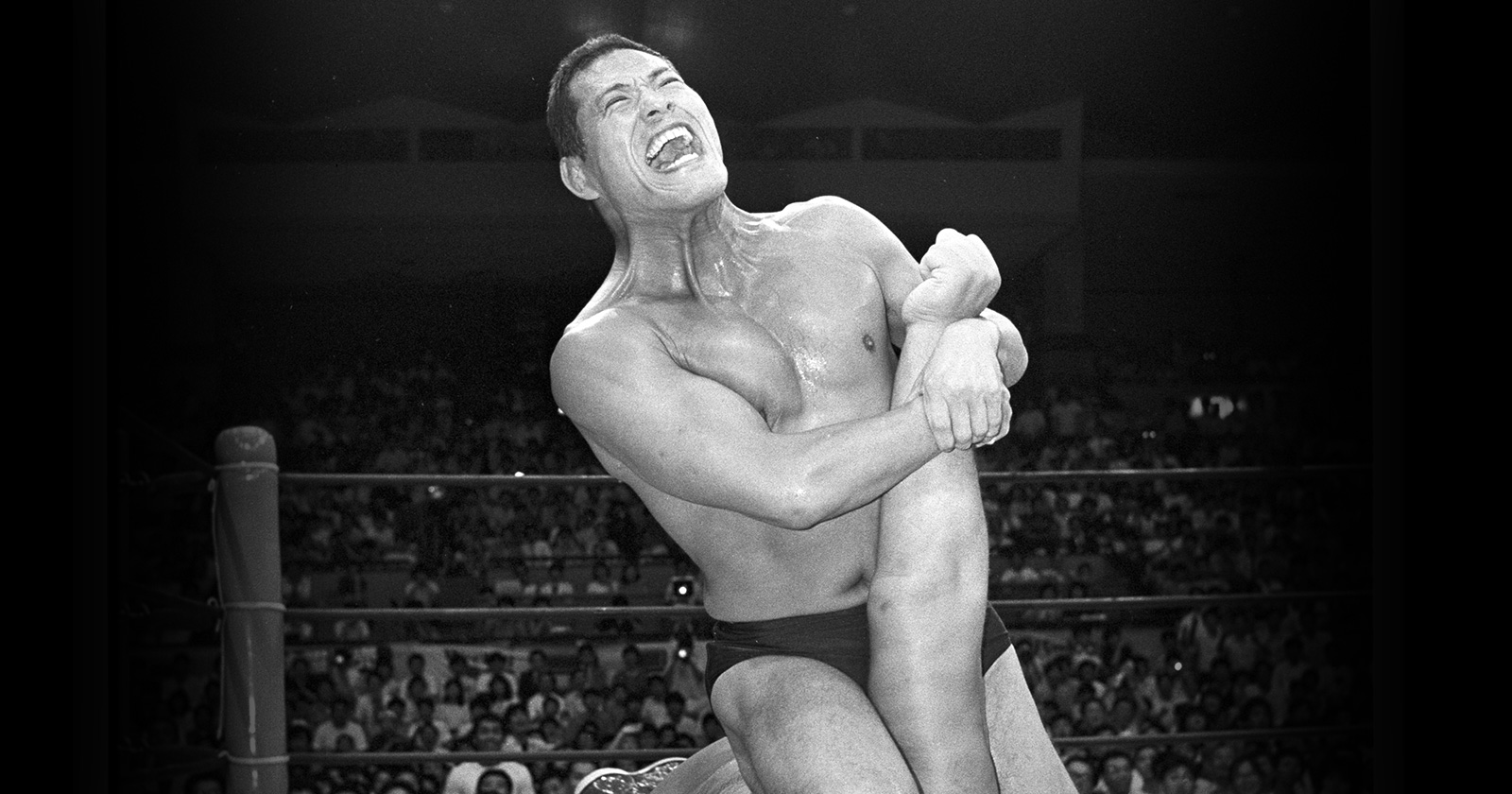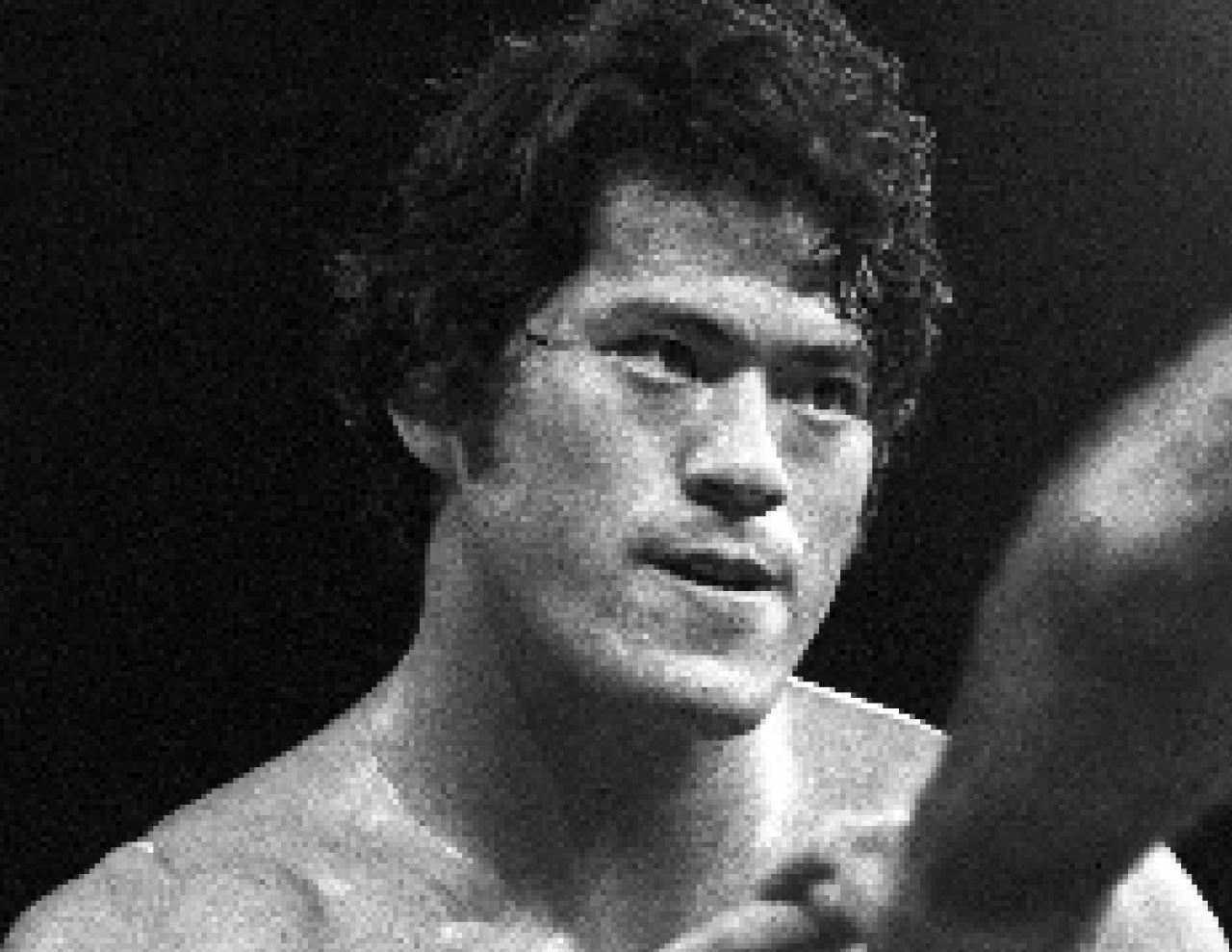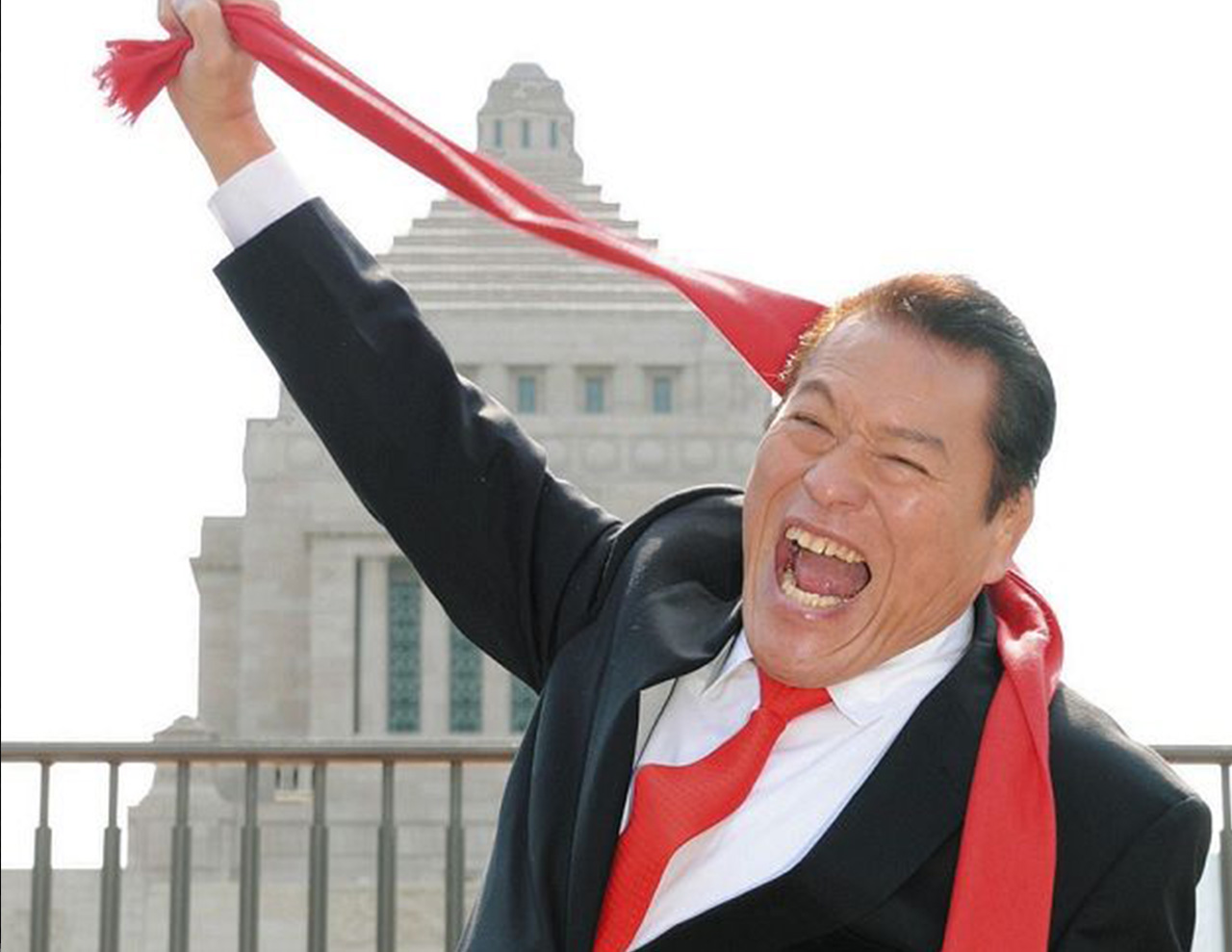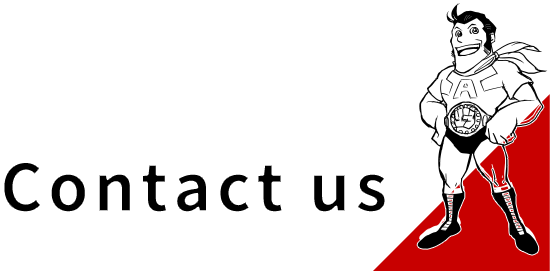
Born February 20, 1943
-

As a martial artist
To prove that he was the best, Inoki continuously took on challenges in a wide range of martial arts, including bouts against wrestling hero Akram Pahalwan and karateka Willie “Bear Killer” Williams, laying the foundation for mixed martial arts in later years.
Above all, his fight against world heavyweight boxing champion Muhammad Ali was broadcast worldwide and garnered a lot of public attention. As the first-round bell rang, Inoki, who was prohibited from using tackles, throws, and joint locks, slid at the feet of Ali and implemented a strategy of trying to knock Ali to the mat, which ultimately failed. After that, he repeatedly lay on his back in the ring and focused on kicking Ali's legs. A little irritated by his tactics, Ali challenged him to stand up. He stood up several times but returned to laying down to attack Ali's legs. Although Inoki’s kicks were definitely damaging his legs, Ali always moved lightly on his feet without showing any leg pain during the match. With no decisive attacks from either side up to the end of 15 three-minute rounds, the bout ended in a draw. Inoki's repeated kicks resulted in terrible swelling in Ali's legs after the bout, with blood clots forming in the backs of his knees, which greatly contributed to his retirement five years later. -

As a politician
In 1989, he founded the Sports and Peace Party under the slogan “International Peace Through Sports.” In the 1989 Japanese House of Councilors election, he was elected for the first time in the proportional representation block with 993,989 votes and became the first wrestler to become a Diet member. On August 2, 1990, Iraq, under the leadership of Saddam Hussein, suddenly invaded Kuwait (Gulf War). In response to condemnations and sanctions from Japan as well as the United Nations, 41Japanese nationals who were in Kuwait at the time were taken to Iraq as de facto hostages and forbidden to leave the country. On December 1, Inoki announced that he would host a peace festival in Iraq. With the Ministry of Foreign Affairs reluctant to support him, he chartered a Turkish Airlines airplane at his own expense and entered Bagdad via Turkey with 46 family members of the 41 hostages and other relevant parties. Following the festival, all hostages and Japanese residents were released.
On June 5, 2013, he announced his candidacy for the 2013 Japanese House of Councilors election in the proportional representation block as a member of the Japan Restoration Party. In the July 21 election, he was elected with 356,606 votes (the most votes in the party) and returned to national politics for the first time in 18 years.
Biography of Antonio Inoki
-
April
1960He returned to Japan after meeting and being recruited by Japan Pro Wrestling Alliance founder Rikidozan, who was touring Brazil.
-
April 11,
1960A press conference was held for Inoki’s entry into the Japan Pro Wrestling Alliance.
It doubled as a press conference for Shohei Baba’s (Giant Baba) entry. -
November
1962His ring name became Antonio Inoki.
-
1964
He left to hone his wrestling skills in the US. He travelled to Los Angeles, Memphis, Nashville, and other cities and eventually won the World Tag Team Championship.
-
April 23,
1966Returning home triumphantly from the United States, he announced at Haneda Airport that he would join the new Tokyo Pro Wrestling promotion.
-
October 12,
1966Tokyo Pro Wrestling’s first event took place in Kuramae Kokugikan.
As the ace of the group, Inoki fought Johnny Valentine.
The bout could be only won by knockout or one of them giving up, which was rare at that time, and there was no 3-count rule.
This bout was the first time the sport media used the term "deathmatch."
Winning by countout, Inoki’s fight captivated the audience, and overnight, his name reverberated throughout the world of Japanese professional sports. -
December 19,
1966After its final event at Tokyo Gymnasium, Tokyo Pro Wrestling stopped hosting its own events.
-
January 5,
1967Inoki and other Tokyo Pro Wrestling wrestlers participated in the opening series for International Wrestling Enterprise.
-
April 6,
1967Japan Pro Wrestling Alliance announced Inoki’s return.
-
May 5,
1967He returned to the Japan Pro Wrestling Alliance ring for the first time in 38 months at Tottori Municipal Gymnasium.
-
May 12,
1967He formed a tag team with Giant Baba at Gifu Municipal Center. BI Cannon was born.
-
October 31,
1967BI Cannon won the NWA International Tag Team Championship at Osaka Prefectural Gymnasium.
-
May 16,
1969He won the 11th World Big League final, held at Tokyo Gymnasium, with his “manji-gatame” finishing move (a type of octopus hold or grapevine stretch) and rose to the top of pro wrestling in Japan.
-
January 26,
1972Aiming for an ideal organization, he announced the founding of New Japan Pro-Wrestling at Keio Plaza Hotel.
He became its president. -
March 6,
1972New Japan Pro-Wrestling's launch event matches were held at Ota-ku Gymnasium.
-
July 7,
1972New Japan Pro-Wrestling’s office opened in Aoyama, Minato-ku, Tokyo.
-
December 13,
1974New Japan Pro-Wrestling left Haneda Airport for Brazil.
It departed for a 10-day pro-wrestling tour and was accompanied by many businesspeople. -
June 26,
1976The fight of the century took place between Inoki and Muhammad Ali at Nippon Budokan, garnering worldwide attention.
Ending in a draw, the showdown would later be regarded as the origin of mixed martial arts. -
August 26,
1979The Dream All-Star Match, involving New Japan Pro-Wrestling, All Japan Pro Wrestling, and International Wrestling Enterprise, took place.
BI Cannon returned for the first time in 8 years. -
1981
He advocated for an International Wrestling Grand Prix (IWGP) with the aim of unifying the many competing championship titles.
-
June 2,
1983He faced Hulk Hogan in the first IWGP final.
Taking an Axe Bomber from Hulk Hogan, he suffered a horrible defeat by KO. -
October 4,
1987The legendary “Ganryujima Duel" with Masa Saito. He won the match, which lasted 2 hours, 5 minutes, and 14 seconds.
-
1989
Founding the Sports and Peace Party, he ran for a Japanese House of Councilors seat in the proportional representation block and was elected.
He became the first wrestler to become a Diet member. -
February 6,
1989At a Foreign Correspondents’ Club of Japan press conference, he announced a partnership between New Japan Pro-Wrestling and the Soviet Union Sports Committee.
He realized Japan-Soviet exchanges in the martial arts world 6 months before the fall of the Berlin Wall. -
April 24,
1989New Japan Pro-Wrestling’s made its first appearance at Tokyo Dome.
-
June 15,
1989He resigned as president of New Japan Pro-Wrestling and became its chairman.
-
June 20,
1989He opened the Sports and Peace Party headquarters in Kita Aoyama, Minato-ku, and officially announced his candidacy for the Japanese House of Councilors election.
-
July 24,
1989Receiving 993,989 votes, he was elected in the proportional representation block for the first time in the 1989 Japanese House of Councilors election.
-
October 14,
1989He was attacked several times with a knife by a thug at an event in Aizuwakamatsu, Fukushima, suffering injuries that took 2 weeks to heal completely.
-
October 25,
1989Out of respect for the Democratic Socialist Party, with which his party had formed a parliamentary alliance, he stood to ask a question in the Diet for the first time while his head was still bandaged and he was still using a wheelchair.
-
February 10,
1990Challenged by Masahiro Chono and Shin-ya Hashimoto, he teamed up with Seiji Sakaguchi to defeat them.
He used “Ichi, Ni, San DAAAAHHHH!!!” (One, two, three DAAAAHHHH!!!), which would later become synonymous with him, for the first time. -
August 2,
1990Following the Iraqi invasion of Kuwait, 41 Japanese people in Kuwait were taken to Iraq as de facto hostages and forbidden from leaving the country.
-
November 30,
1990He departed for Iraq on a chartered Turkish Airlines airplane together with family members of the hostage.
-
December
2 and 3,
1990He hosted a peace festival in Iraq, which would trigger the release of the Japanese hostages during the Gulf War.
-
December 7,
1990The decision was made to release the Japanese hostages.
-
April
28 and 29,
1995He hosted a pro wrestling event in North Korea called the “Pyongyang International Sports and Culture Festival for Peace.”
The event was attended by 380,000 spectators over the course of two days. -
April 4,
1998His farewell match took place at Tokyo Dome, attracting 70,000 spectators, the highest attendance in the Dome's history.
Fighting former Ultimate Fighting Championship (UFC) champion Don Frye, he defeated him with a Ground Cobra Twist (Grapevine).
He recited the poem “Michi” (Road) during his farewell ceremony. -
December 31,
2000He produced the “Inoki Matsuri” (Inoki Festival), the prototype for New Year's Eve martial arts events.
-
August 28,
2002Dynamite! (PRIDE Shockwave) was held as a martial arts event at Japan National Stadium for the first time, with Inoki working as a producer.
-
June 29,
2007Inoki Genome Federation (IGF) launched.
-
February 1,
2010He became the first Japanese person inducted into the World Wrestling Entertainment (WWE) Hall of Fame.
-
September 15,
2010He was appointed to the Order of Democratic People’s Republic of Korea Friendship 1st Class by North Korea.
-
March
2011He visited the Great East Japan Earthquake disaster areas.
He also visited evacuation centers to provide encouragement to victims of the disaster. -
August
2011He hosted an earthquake recovery event at Ryogoku Kokugikan Sumo Arena.
He invited 5,000 people from the disaster areas to attend (bus transportation, lodging, and meals were included). -
2012
He hosted a pro wrestling peace festival near the border between Pakistan and Afghanistan (Peshawar).
-
November 20,
2012He was awarded the Cuban Friendship Medal.
-
June 5,
2013He announced his candidacy for the Japanese House of Councilors election as a member of the Japan Restoration Party.
-
July 21,
2013With 356,606 votes, the most votes in the party for the proportional representation block, he was elected in the 2013 Japanese House of Councilors election and returned to national politics.
-
July 9,
2014He organized a six-person delegation consisting of 6 members of the Diet, including himself, to visit North Korea.
They held talks with Kang Sok-ju, secretary of the Worker’s Party of Korea and an advisor to the Japan Korea Friendship Association, and Pak Kun-gwang, deputy head of the Party’s International Department and president of the Japan Korea Friendship Association, about efforts to resolve the abductions issue and about exchanges between their peoples. -
August
2014He joined the Party for Future Generations after the Japan Restoration Party split.
He became director of the national sports bureau of the party and chairperson of the House of Councilors Policy Research Committee. -
December 12,
2014He left the Party for Future Generations.
-
January 8,
2015He joined the Assembly to Energize Japan at its founding and became its top advisor.
-
January 21,
2015He met Nobel peace laureate Malala Yousafzai in the UK.
-
March 1,
2015He was appointed as a Goodwill Ambassador for the Olympic Games by the Cambodian Olympic Committee.
-
2020
He was diagnosed with cardiac amyloidosis, a nationally designated intractable disease.
He continuously provided information about his battle against the disease via YouTube. -
August
2022He appeared live on 24-Hour Television while battling against the disease.
This was his last TV appearance. -
October 1,
2022He died at the age of 79.

